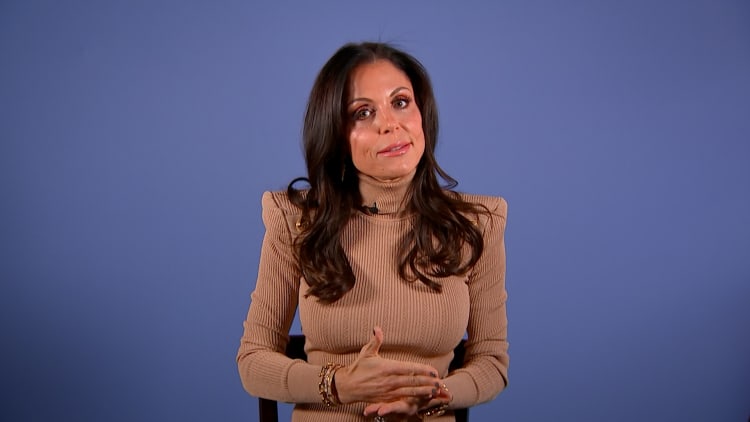[ad_1]
Most of us are familiar with the Sunday scaries.
Marisa Jo knew those feelings all too well: “I would wake up on Monday already feeling behind, overwhelmed, and anxious — this feeling would only compound as the week continued.”
“I was trying to get myself to overachieve my way out of the burnout I was experiencing, but of course, that didn’t work.”
Sick of the “instant panic” she felt upon waking up, she gave herself permission one Monday last year to do the bare minimum for work.
Giving myself actual permission to just do the least amount of work possible that day was extremely liberating, because I’d been conditioned to believe that my worth is directly tied to my productivity and output.
“Giving myself actual permission to just do the least amount of work possible that day was extremely liberating, because I’d been conditioned to believe that my worth is directly tied to my productivity and output,” she told CNBC Make It.
“So alleviating that pressure and choosing to let myself off the hook was a much needed change of mindset going into the beginning of the week … which suddenly allowed me to be productive again.”
Jo went on to coin the term “bare minimum Monday” on TikTok, and videos with the hashtag have since racked up 2.2 million views at the time of this article’s publication.
According to a recent study from LinkedIn and Headspace, nearly 75% of working working Americans say they experience the Sunday scaries.
“With the volume of work or meetings on our plates, there needs to be a heightened focus on mental health and well-being instead of employees thinking they have to put their foot right on the gas at 9am on Monday,” said Andrew Hunter, a career expert and co-founder of job search engine Adzuna.
“This trend is about giving employees flexibility to pace their work evenly … reducing work-related stress and burnout that can potentially carry over into their engagement, productivity and the company culture.”
How does bare minimum Monday help with burnout? And is it for everyone? CNBC Make It finds out.
Bare minimum is ‘still enough’
For Jo, a bare minimum Monday looks like this: The first 2 hours of the day are “phone- and work-free,” and used to do anything that sets herself up for a good week ahead.
“This could be finishing errands I didn’t get to on the weekend, working on a creative project, getting extra rest, exercising, whatever I feel is needed.”
The work portion of her day, typically 3 hours, involves must-do tasks that don’t feel like a stretch to finish on Monday.
I can understand that some might interpret it as a ‘pass’ [to do less] … but if we can’t find a way to help people create a work-life mix that supports mental well-being, we can’t be successful.
Dr. Natalie Baumgartner
Workplace psychologist
“I make sure that the tasks I assign myself are urgent, important, or both, and everything else waits until Tuesday — unless I gain enough momentum to keep going,” she said.
“To me, a ‘must-do’ task is one that has direct consequences if … not completed. This could be something that has to stick to a strict schedule or something others are waiting on.”
While bare minimum Monday is a concept that has resonated with many on social media, Jo acknowledges there are critics who see it as a way to slack off at work.
“The term ‘bare minimum’ has always been used in a negative way when it comes to work, but … the definition actually is: The least amount of something that is allowable.”

“Critics are forgetting that the bare minimum quite literally means that it’s still enough.”
Workplace psychologist and behavioral expert Natalie Baumgartner warned against “unintentionally villainizing workers” when the concept is “a reflection of the systemic issue” of overworking and burnout.
“I can understand that some might interpret it as a ‘pass’ [to do less] … but if we can’t find a way to help people create a work-life mix that supports mental well-being, we can’t be successful.”
How to make it work
But bare minimum Mondays could lead workers to procrastinate to avoid stress.
“As a psychologist, I see that there is the potential that if ‘bare minimum Mondays’ are not managed well — we could push off Monday stressors to Tuesday, which still mitigates the issue but doesn’t remove it,” Baumgartner said.

“Perhaps it’s not the whole day of Monday but that the first two hours of Monday are dedicated to self-care … In that way, there is a softer transition to the week that begins with prioritizing health and well-being.”
Amy Zimmerman, chief people officer at fintech company Relay Payments, shares that view.
“If it’s coming from someone who routinely faces performance issues and excessive time off, it could very well go from ‘bare minimum Mondays’ to ‘bare minimum every days’ and that isn’t okay,” she said.
Experts CNBC spoke to said bare minimum Mondays could backfire if expectations aren’t clearly communicated to colleagues or employers.
If you’ve decided you’re not working on deadlines or taking meetings on Monday but don’t communicate that with your teams, they may become frustrated and start to create their own narrative about why you aren’t participating.
“If you’ve decided you’re not working on deadlines or taking meetings on Monday but don’t communicate that with your teams, they may become frustrated and start to create their own narrative about why you aren’t participating,” said workplace expert Jenn Lim.
“A more effective way to go about it is to communicate intentions openly with your team and manager.”
Adzuna’s Hunter added that workers should recognize that there may be circumstances in which having a “bare minimum Monday” is impossible, such as “unforeseen or urgent projects.”
“It’s important for employees and employers alike to be flexible, so the workload is appropriately distributed and colleagues or managers aren’t placed under extra stress from missed deadlines.”
Benefits for employers
Though bare minimum Mondays aren’t likely to be adopted by companies anytime soon, experts said considering the essence of the concept could be beneficial for employers.
“The core message is a good one — we must prioritize wellbeing or we all fail. I think ‘bare minimum Mondays’ are one of many creative concepts that should absolutely at least be considered inside organizations,” said Baumgartner.
“One of the most powerful ways to get out in front of this is to keep your finger on the pulse of how employees are doing and what they need.”
Employers must look beyond presenteeism and give their employees the trust and flexibility to complete tasks according to their own schedules.
Andrew Hunter
Career expert
[ad_2]

